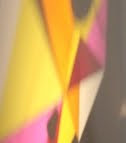when bees have honey sweetened ears...

today a copy of lorenzo langstroth's the hive & honey bee arrived in the mail. this book, published in 1852 was considered one of the most important texts on bee-keeping at the time, and is still in print and widely used. langstroth, who lived in the philadelphia area, also devised the "movable frame hive" which revolutionized apiary hives forever. as these things always happen, i unpacked the book and happened to open it to the following text:
"that bees can hear, either by their antennae or some other organ, few will now deny, even although the sound of a gun near the hive is entirely unnoticed by them. (langstroth)
"should some alien being watch humanity during a thunderstorm, he might quite similarly decide that thunder was to us inaudible. clap might follow clap without securing any external sign of recognition; yet let a child with tiny voice but shriek for help, and all would at once be awakened to activity. so with the bee: sounds appealing to its instincts meet with immediate response, while others evoke no wasted emotion." (cheshire)
"the sound that bees produce by the vibrating of their wings is often the means of calling one another. if you place a bee hive in a very dark room, their humming will draw the scattered bees together. in vain to you cover the hive or change its place, the bees will invariably go towards the spot whence the sound comes" (collins, paris, 1875)
to prove that bees can hear is easy, but to determine the location of the organ is more difficult. small holes which were discovered on the surface of the antennae have been considered organs of hearing by lefebure (1838), and by others later. cheshire has noticed these small holes in the six or seven last articulations of the antannae: holes which become more numerous towards the end of the antannae, so that the last joint carries perhaps twenty. he, also, considers these as the organs of hearing, especially because they are larger in the drones, who may need to distinguish the sounds of the queen's wings (the queens and the drones, in flight, each have a peculiar and easily distinguishable sound). on this question, prof. cook and his beekeeper's guide says:
"no apiarist has failed to notice the effect of various sounds made by the bees upon their comrades of the hive, and how contagious are the sharp note of anger, the low hum of fear, and the pleasant tone of a swarm as they commence to enter their new home. now, weather insects take note of these vibrations as we recognize pitch, or whether they just distinguish the tremor, i think no one knows".
it's interesting how much of this book is a kind of montage of various histories of bee study with every paragraph coming from a different source. one should try to read it as if each a different voice. since i know nothing about bees technically, i have no idea if these ideas from the early 1900's are accurate or not, but the language and ideas certainly seem poetic and beautiful.
Labels: beehives, bees, henry lapp, lorenzo langstroth, thomas ustick walter

2 Comments:
Where did you get this copy to purchase? I have looked everywhere and can't seem to locate one.
Thanks for any help with this!
Jill
bookfinder.com - abe should have numerous copies.
good luck
Post a Comment
<< Home